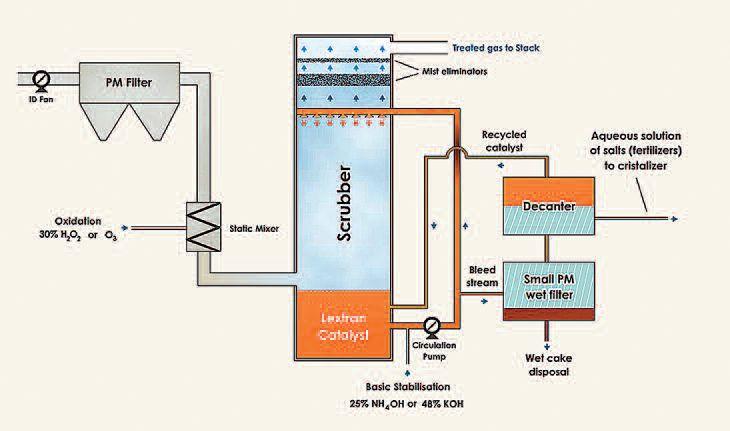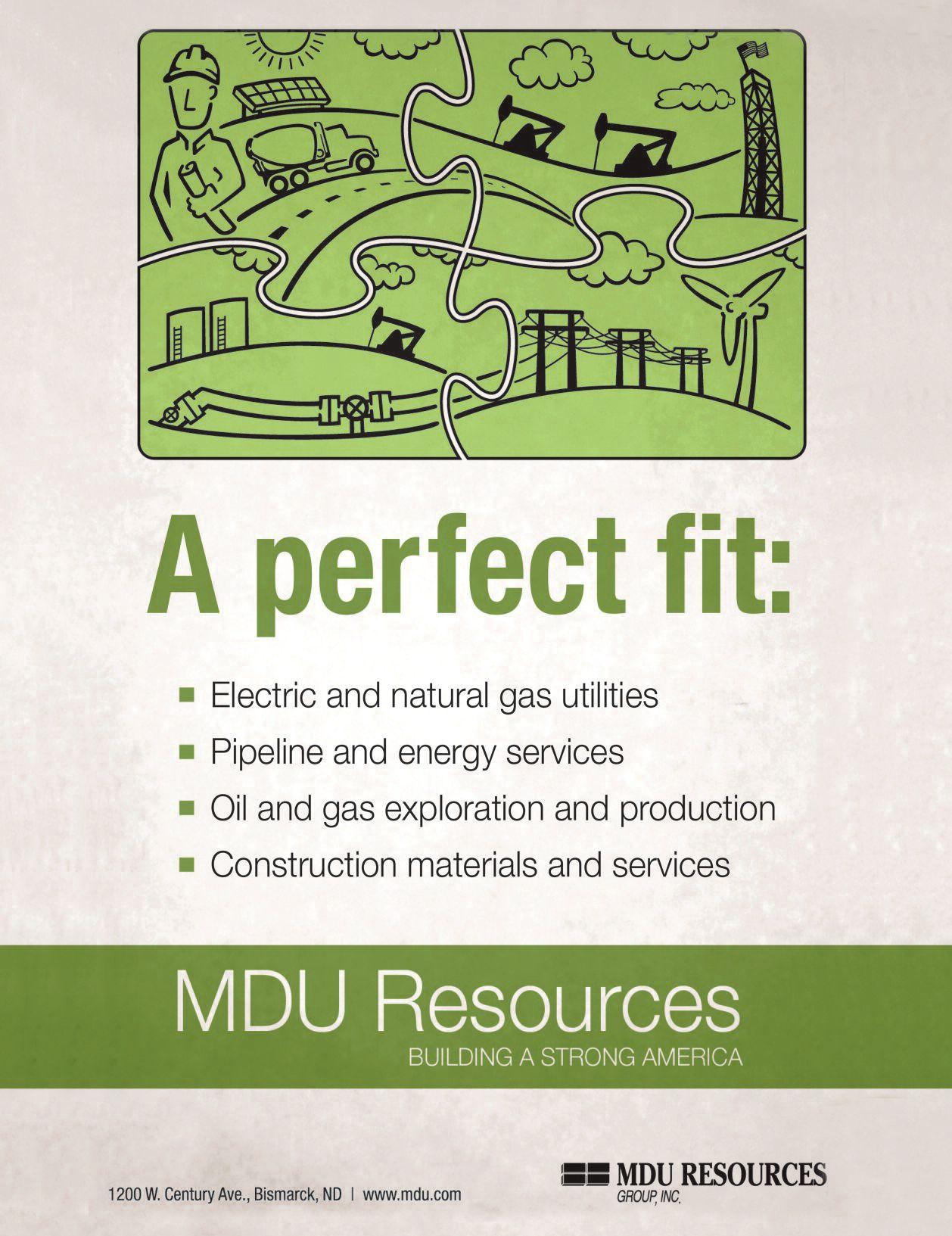
5 minute read
Seeing is believing
Video conferencing as an alternative to travel, phone meetings
BY KRIS BEVILL
There’s a lot to be said for the value of face-toface conversations when interacting with coworkers and business associates, but hectic schedules and distances between offices can sometimes make in-person meetings difficult to arrange.
But as technology has improved and expanded to include more options for video communication at more affordable prices, a growing number of companies are turning to visual communication systems to bridge the gap between workers and replace the standard conference call, according to Mike Werch, president and CEO of video conference systems and services company Video Guidance.
“As the technology has evolved, we find that it’s a logical extension to have video anywhere,” he says.
Video Guidance is headquartered in Bloomington, Minn., and has offices and video demonstration facilities in Wisconsin, Fargo and Bismarck, N.D., and Sioux Falls, S.D. The company provides services for a variety of entities, typically with multiple locations and a dispersed workforce, including banks, educational institutions, government offices, manufacturers and health care providers. It currently serves more than 50 mid- to large-sized customers in the Dakotas, according to Werch. While the company has done business in South
Dakota for years, it expanded its focus there last year through a strategic partnership formed with information technology (IT) solutions provider Connecting Point Computer Center, which has locations in Sioux Falls, Watertown and Pierre, S.D., and Bismarck. Video Guidance expanded to North Dakota last summer as well and has a strategic partnership with Fargo-based IT solutions provider Network Center Inc. Werch says he expects the company’s cloud-based video services and strategic partnerships in the Dakotas will allow for continued growth in the small- to mid-sized markets, particularly in the “explosive” vertical markets of health care and education.
Essentia Health began using a Video Guidancesupported video conferencing system in 2011. Brett Baker, manager of desktop support and mobile technology, says the concept of video conferencing has been growing in popularity ever since. “We get requests on a daily basis to be added to our video conferencing capabilities,” he says.
Essentia’s 12,000 employees are spread throughout many locations, so the ability to connect via video rather than drive somewhere for a meeting is a major attractant, according to Baker. “[Demand] is going to continue to grow and at the rate we’re seeing it, we’re going to continue to expand our system,” he says. “Video technology allows us to be much more flexible. It doesn’t matter where the other person is as long as they have Internet capabilities.”
In the past, the cost of installing a video conferencing system has been a deterrent, but Werch says that organizations can now utilize the cloud to use systems without purchasing equipment up front, which drastically reduces costs. For example, before cloud services were available, a company utilizing five conference room systems could expect an average three-year total cost of about $200,000, he says. With cloud services, that same company would now pay half that amount.
With the increasing popularity of BYOD (bring your own device) and use of video in daily lives, Welch says he believes video will eventually replace phone calls, driven in part by young work- ers who seek to incorporate video into their professional lives the same way that they are already incorporating it into their personal lives. “A lot of organizations are very nervous that if they don’t have a platform and a strategy around video there will be renegades — the younger people will bring in video in some fashion — and organizations want their communication to be secure, encrypted and with a logical plan around video and usage of the network so it doesn’t bring the network down,” he says. “Keeping up on the best way to get this technology into the end-users hands and getting them comfortable with it is what we do.” PB
Kris Bevill Editor, Prairie Business 701-306-8561, kbevill@prairiebizmag.com




Technology offers coal plants simultaneous pollutant control
Great River Energy teams with Israel-based firm to test method at EERC
BY KRIS BEVILL
Technology recently tested at the Energy & Environmental Research Center in Grand Forks, N.D., could prove to offer a cost-effective method to reduce nitrogen oxides (NOx) and sulfur oxides (SOx) from flue gases at North Dakota’s lignitefueled power plants.
Yuval Davidor, CEO of Israel-based air pollution control company Lextran Ltd., says his company’s technology is unique in that it can remove both pollutants simultaneously. Conventional systems substantially remove only one pollutant, thus requiring multiple processes and infrastructure to support each process.
To achieve simultaneous NOx and SOx removal, Lextran’s technology replaces the lime emulsion typically used to absorb SOx with an organic catalyst mixed with water, which enables the absorption of both SOx and NOx at the same time. Next, a base material such as potassium hydroxide or ammonia is added to the oxidized gases to convert them to a nitrogen-rich fertilizer. Davidor says other pollutant removal methods either convert the gases to lower-value gypsum byproducts or simply dispose of the gases.
Lextran’s technology was initially developed in 2000 and went through several years of research and pilot testing before its first commercial deployment in 2009 at a 25 megawatt treatment facility in Romania. Since then, the technology has also been applied at two commercial facilities in China.
While the technology has been applied at various types of industrial facilities, Lextran had not tried it on lignite flue gas until a series of connections resulted in a weeklong test conducted in January at EERC’s demonstration facility. Davidor says the test was the result of a meeting between Lextran and Great River Energy executives at an air quality conference.
“Great River Energy is a very innovative company,” he says. “They initiated the contact with the vision that this technology is promising to North Dakota lignite particulars, which make it very difficult to control NOx emissions with conventional technologies.”
Lextran Ltd., an Israel-based air pollution control company, has developed technology to simultaneously reduce nitrogen oxides and sulfur oxides at coal-fired power plants. IMAGE: LEXTRAN LTD.

EERC’s testing demonstrated Lextran’s technology is capable of removing at least 85 percent of both pollutants from lignite-fired flue gas, with the potential for higher removal efficiency. Davidor says the results, which showed lower removal levels than at other test site applications, were likely due to the small size of the facility and the fact that the test window didn’t allow for facility optimization. Other tests have shown Lextran’s technology to be capable of removing up to 99 percent of SOx and up to 90 percent of NOx.
Great River Energy operates North Dakota’s largest power plant. Coal Creek Station, located near Underwood, N.D., about 50 miles north of Bismarck, has a total generation capacity of more than 1,100 megawatts and uses up to 8 million tons of lignite coal per year. According to the company, it has invested about $200 million in environmental equipment since the plant was built in the late 1970s to ensure it uses the best available technology to control emissions and continues to seek ways to further reduce emissions, including testing novel methods.
Davidor says he is unsure when Lextran’s technology will be tested at a commercial scale at a North Dakota lignite-fired plant and that it will likely require either a visionary owner who sees the potential financial benefit of implementing the technology or a consortium of plant owners willing to share the risk and investment costs. He noted that research conducted by the Electric Power Research Institute suggests an operator of a 500-megawatt boiler could save an estimated 40 percent in combined capital and operating costs over 10 years by using Lextran’s multi-pollutant control technology compared to base-line pollution control methods. PB
Kris Bevill Editor, Prairie Business 701-306-8561, kbevill@prairiebizmag.com











